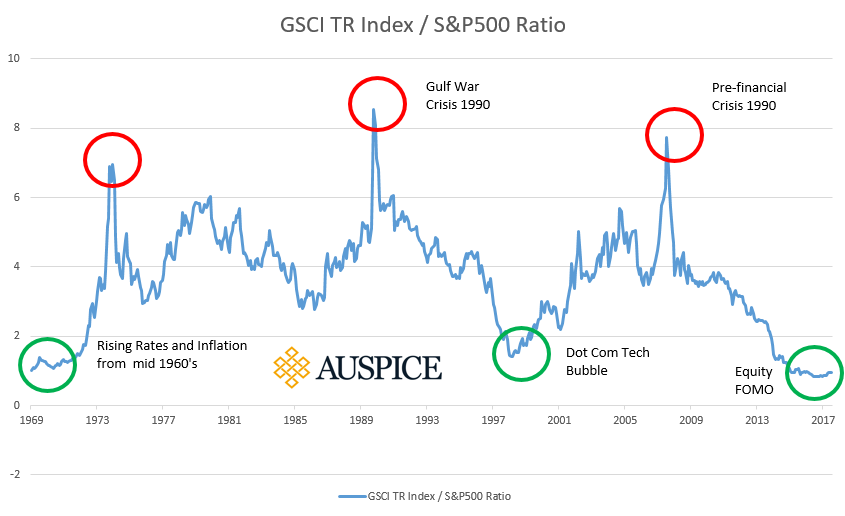In October I attended an institutional investor conference in Toronto that reminded me about the significance of alternative investments. It used to be that these were fringe discussions, on the cutting edge. Even the name "alternative", conjures up visions of something edgy or rejecting the mainstream. Alternative music, alternative lifestyles, alternative energy. When it comes to investing, alternatives are still considered by many retail advisors to be a non-mainstream choice. Fast forward a few years, and now many in the institutional space consider alternatives to be part of the mainstream.
This acceptance seems to fly in the face of the pitch of old for "Alts"; that they generate higher returns by taking greater risks along with the potential benefits of low correlation to more traditional assets like stocks and bonds. Alts were considered sophisticated and opaque, adding to the exclusive allure.
When looking at institutional investors, we generally consider them a group that has the role of protecting capital first and foremost, while also looking to achieve investment goals. In practice, this is often the case for groups like pensions, and endowments. These groups realized many years ago that they needed to look at alternatives to achieve return goals along with the goal of reducing the stock market risk as asset allocation became their focus. They were early adopters of investing in private equity, infrastructure, real estate and these are now considered "traditional" alternatives. These three categories alone often make up nearly 50% of institutional portfolios. Adding "hedge funds", now often referred to as "absolute return", rounds out the typical institutional Alt focus.
These strategies have now found their way into retail portfolios in varying degrees. Given interest rates are very low and the stock market has rallied for over 10 years, the challenge of finding new reasonable returns at modest risk is becoming more challenging for institutional and retail investors alike. While the cost and complexity of alternative investments has always been a criticism, efforts have been made provide lower cost solutions via delivery mechanisms that all investors can access including ETFs and mutual funds. Many alternative strategies that historically were structured with hedge funds like fees of 2% management fee and 20% performance sharing are now available for management fee only to meet investor and regulator needs.
While some global retail markets have embraced alternatives, looking to invest more like the institutional investors, some markets have lagged. While Europe and the US have been very progressive, with a system of many independent RIAs (registered investment advisors) acting like mini-institutions and employing the same philosophies as the respected Yale endowment model, Canadian investors are indeed behind. Most retail investment, largely controlled by the Canadian bank monopoly, has provided little in the way of alternative solutions. As of 2019, this has started to change, with the advent of a new regulatory framework for liquid alternatives in Canada – and not a moment too soon.
To quote the CEO of one of the largest Mutual fund companies in Canada:
The democratization of alternative investments has just begun in Canada with the increasing availability of “liquid” alternatives – funds that make use of hedge-fund-like investment strategies – which debuted in January for Canadian retail investors. Prior to this, they had been mostly within the domain of large, sophisticated institutional investors, such as public pension plans, sovereign wealth funds, endowments and foundations, and high-net worth individuals. - Barry McInerney is the President and CEO of Mackenzie Investments
To learn more about the innovative Auspice alternative investments and the potential portfolio benefits, please give us a call.
Disclaimer below
IMPORTANT DISCLAIMERS AND NOTES
Futures trading is speculative and is not suitable for all customers. Past results are not necessarily indicative of future results. This document is for information purposes only and should not be construed as an offer, recommendation or solicitation to conclude a transaction and should not be treated as giving investment advice. Auspice Capital Advisors Ltd. makes no representation or warranty relating to any information herein, which is derived from independent sources. No securities regulatory authority has expressed an opinion about the securities offered herein and it is an offence to claim otherwise.
QUALIFIED INVESTORS
For U.S. investors, any reference to the Auspice Diversified Strategy or Program, “ADP”, is only available to Qualified Eligible Persons “QEP’s” as defined by CFTC Regulation 4.7.
For Canadian investors, any reference to the Auspice Diversified Strategy or Program, “ADP”, is only available to “Accredited Investors” as defined by CSA NI 45-106.


















